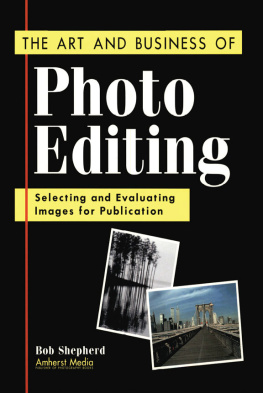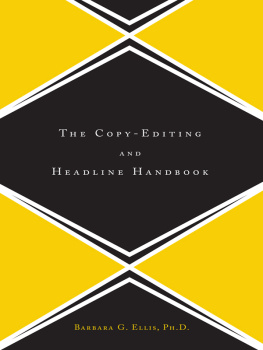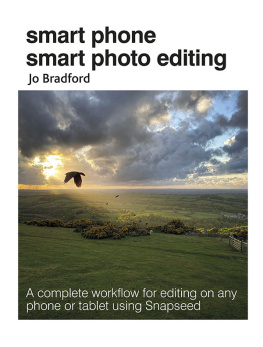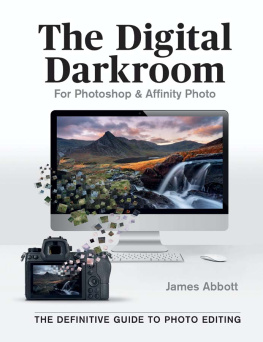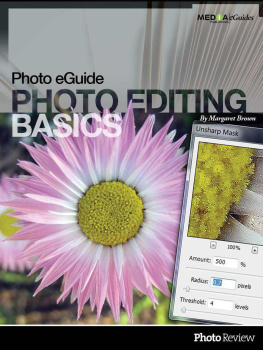APPENDIX A
Answers to
Self-Test Questions
Answers to the questions for lessons 2 through 5 are provided in this appendix. Answers are listed by lesson number and section self-test number.
Lesson 2: "Patterns Balance and Order"
Section Self-Test #1
- 5" x 8" (exactly 5:8 ratio) and 10" x 16" (2 x 5:8 ratio)
- Yes. A rectangle whose sides are 10 squares wide in one direction and 16 squares wide in the other direction maintains the exact same ratio as a rectangle whose sides are 5 squares in one direction and 8 squares in the other direction (2 x 5:8 = 10:16). The large increase in total number of squares from 40 to 160 is a result of increased area. In maintaining a 5:8 ratio (the ratio of a Golden Rectangle), we are concerned with linear measurement (the length of the sides of the rectangle), not area.
- False. The 35mm frame is slightly larger.
- False. The brain still recognizes orderly patterns such as rectangles, circles, triangles, curves, lines, etc.
- True
- True
- True
- landscape, portrait
- False. It does reflect the natural world.
- 8" x 12" and 11" x 16" (these are 35mm full-frame print sizes and correspond to the 2:3 or 0.66 ratio of 35mm negatives).
Section Self-Test #2
- Establishing balance and order within a photographic frame.
- True
- Four
- False. The principle of thirds is only a tool, not a hard-and-fast rule. Many outstanding photos do not conform to the principle of thirds.
- False
Note: For answers 6 through 10, refer to photo 2-4, Kitten Asleep in a Log.
- The subject of the photograph is the kitten.
- The kitten's head and paws have been positioned along the left vertical one-third line, and its body is positioned along the lower horizontal one-third line.
- The log is a secondary element within the frame.
- Adds to the image. Most of the image of the log runs along the left and bottom borders of the frame formed by the Golden Rectangle, and the log forms a frame around the subject.
- Yes. The main elements within this photo are located at or near the points of intersection along the horizontal and vertical one-third lines. The kitten's head is at or near the upper left balance point, its front right paws are at or near the lower left balance point, and its rear left paw is at or near the lower right balance point.
Section Self-Test #3
- Attracting the viewer's attention to the subject within the photographic frame through the use of various compositional techniques.
- Placing the subject at a specific position within the photographic frame to achieve balance.
- Emphasizing the subject by placing it closer to the lens of the camera, making the subject seem larger than it really is.
- The technique used by photographers to accent a subject through other elements in the photograph.
- A compositional technique for focusing attention to a distant subject or object.
- Throwing everything out of focus in the photographic frame except for the subject.
- Repeated images that are found within the same photographic frame.
- Emphasizing the subject by giving it a feeling of motion.
- Creating a powerful three-dimensional effect where the viewer sees something happening in the foreground, middle ground, and background within the photographic frame.
- Geometric forms like converging lines and imaginary triangles that can dramatically improve photographic composition.
Section Self-Test #4
- True
- True
- True
- The photographer positioned the taller rose at or near the upper right balance point, the larger rose at or near the lower right balance point, and the smaller rose at or near the lower left balance point, thereby creating both balance and a geometric form within the photographic frame.
- The way the roses seem to be stretching upward as if they are delighted to be receiving the life-sustaining rays of the sun.
- The subject's head is positioned at or near the upper right balance point of the photographic frame and its open mouth is positioned at or near the lower right balance point.
Lesson 3: "Colors, Tones, and Exposure"
Section Self-Test #1
- Saturation, balance, fidelity, and contrast
- The intensity of the colors in the photograph
- Both accurate color reproduction and color cast
- The faithful color reproduction of the original scene or subject
- The distinguishable differences between the lightest and darkest shades of the same color
- Shades of the same color in high-contrast photographs are clearly distinguishable and shades of the same color in low-contrast photographs are nearly indistinguishable.
Section Self-Test #2
- True
- True
- False. Silver-halide crystals are converted into black metallic silver.
- True
- True
- all
- black
- some
- gray
- none
- clear
- The film was exposed to bright light and the silver-halide crystals were converted into black metallic silver during the development process.
- The film was never exposed and the silver-halide crystals, having received no light, were not converted into black metallic silver. During the development process, all the unaffected silver-halide crystals were washed away.
Section Self-Test #3
- Silver-halide crystals
- The red wavelengths are reflected off the rose
- Red-, blue-, and green-sensitive nerve systems
- Red- and blue-sensitive nerve systems
- Red, blue, and green
- Green- and blue-sensitive film layers
- Color couplers
- Cyan, magenta, and yellow
- Correcting inaccurate color reproductions
- De-emphasize yellow and magenta or increase cyan
Section Self-Test #4
- True
- Aperture
- larger, smaller
- doubles, halves
- Two, four times as much light. From f/8 to f/4 is a total of two full f/stops (f/8 to f/5.6 = 1 f/stop, and f/5.6 to f/4 = one f/stop, for a total of two f/stops) and the aperture is being opened. For each full f/stop the aperture is opened, twice as much light enters the lens of the camera, or twice the light times twice the light equals four times as much light (2x2 = 4).
- Three, 1/8 as much light. From f/4 to f/11 is a total of three full f/stops (f/4 to f/5.6 = one f/stop, f/5.6 to f/8 = one f/stop, and f/8 to f/11 = one f/stop, for a total of three f/stops) and the aperture is being closed ("stopped down"). For each full f/stop the aperture is closed, half as much light enters the lens of the camera, or one-half the light times one-half the light times one-half the light equals 1/8 as much light (1/2 x1/2 x 1/2 = 1/8).
- Photograph 3-4, exposed at f/8. If you didn't choose photograph 3-4, don't worry about it. If you chose photograph 3-3, you were close enoughfor now! After studying the section on the Zone System, you will fully understand and appreciate why photograph 3-4 is the properly exposed photograph.
- Follow instructions based upon your answer. Be sure you understand the concept of exposure control before continuing on to the section on the Zone System.
Section Self-Test #5
- True
- False. The photographer can control the amount of exposure that each frame of film receives in the camera, but the entire roll of film is subjected to the same development. In other words, the Zone System can be applied to each frame of film as the film is exposed one frame at a time in the camera. The Zone System cannot be applied to each frame of film during development because the entire roll of film is developed at the same time.
- False. The exposure meter will give the photographer an averaged exposure reading of all the light in the scene.

